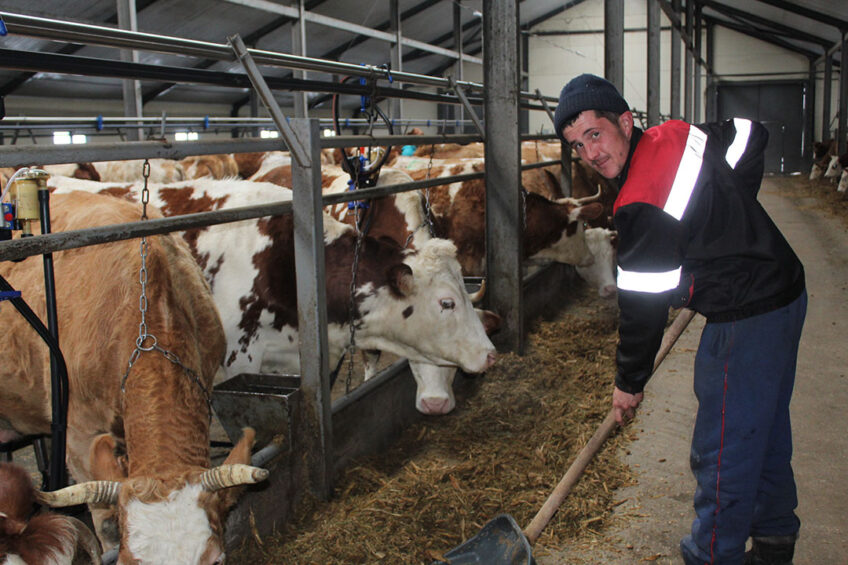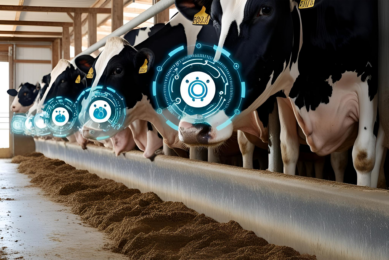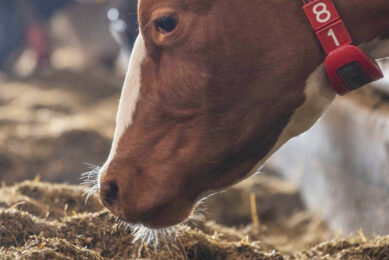Russia’s emissions regulation causing dairy concerns

A greenhouse emission regulation is expected to have a major impact on the Russian milk industry, and, if not adjusted, could pull down production performance in the coming years.
The Russian union of dairy producers, Soyuzmoloko, has filed a letter to the Russian government urging the authorities not to apply the new greenhouse emission regulation in the milk industry. The new rule in the current edition “does not comply with international practice in regulating greenhouse gas emissions and Russia’s goals to reduce these emissions,” claimed Soyuzmoloko.
Soyuzmoloko argued that the regulation will lead to unreasonably high costs for agricultural producers and the risk of incorrect accounting of greenhouse gas emissions in the dairy industry. This could subsequently lead to a reduction in the livestock population, the business union warned in the letter.
Carbon and emissions
Russian President Vladimir Putin has signed the law introducing the first emissions caps requiring a broad range of companies to prepare and submit carbon reports to the government as of 2025. The first regulations are scheduled to come into force in 2022, even though the law is yet to be detailed. The companies found surpassing the emission caps are likely to be subjected to fines or an ecological fee.
The new law is a part of a broader initiative aimed at making the Russian economy more environmental-friendly in the coming decades.
In November 2020, Russia put forward an updated emissions reduction target of at least 30% below 1990 levels by 2030. This updated target does not represent an increase in climate action. In October 2021, the Russian government announced a net-zero emissions target for 2060, but this has not yet been formally adopted, nor is it clear whether this will cover all emissions or CO2 emissions only.
However, according to the Climate Action Tracker, Russia lacks any substantial contribution to international climate finance goals, which is coupled with its highly insufficient domestic target and climate policies.
Dairy farmer costs
From the point of view of achieving carbon neutrality, agriculture is far from being the main target of the Russian government, since, for example, in heavy industry or power generation, it is possible to achieve great results in terms of solving global tasks of curbing carbon footprint with much lesser investments, the general director of Soyuzmolok, Artem Belov, stated.
A drastic increase in livestock production
According to Soyuzmoloko’s estimates, Russia’s agriculture greenhouse gas emissions were equal to only 46% of the 1990 level, yet the country’s livestock production increased drastically over the past few decades. Even in spite of government regulations aimed at lowering greenhouse emissions, Russian agriculture in this field is believed to be “at the level of the world’s most advanced economies,” it said.
Share of agricultural emissions
Soyuzmoloko said that in Russia, the share of agricultural emissions is lower than in developed countries – standing at 5.9% compared to 7.6% in Germany, 10% in the US, and 17% in France.
In 2017-2019, cattle emissions in Russia amounted to 1.6 million tonnes, according to Meat Atlas 2021/OECD, FAO. This is lower than in other key world markets. In comparison, this figure stands at 11.8 million tonnes in the US, 7.3 million tonnes in the EU, 9.1 million tonnes in Brazil, 6.5 million tonnes in China, 2.9 million tonnes in Argentina, and 2.5 million tonnes in India.
A rise in prices anticipated
The law obliges milk farmers to submit climate reporting to the government, counting all greenhouse emissions every year. In Russia, milk farming is a low-margin industry, and along with some other upcoming regulations, for example, mandatory products labeling, the new regulation is expected to provoke a rise in costs and a price hike on the retail market. It would cost an average Russian milk farm 1.1 million roubles (US$16,000) to prepare a full report on greenhouse gas emissions, according to Soyuzmoloko.
“The additional costs will make Russian dairy products less competitive compared with those from other exporting countries, including the EU and North America, which have not yet introduced such regulations,” Belov pointed out.
Dwindling milk production
Soyuzmoloko has also criticised the method of calculating emissions. To minimise reporting costs, the draft government decree proposes to calculate emissions by simply multiplying the number of livestock by a given factor. Milk farmers are confident that this is the worst approach. The government provides no incentives to farmers to employ modern technologies and feeding solutions to cut carbon emissions.
A source in the Russian feed industry commented that the demand for feed additives reducing greenhouse gas emissions among the cattle population is very low, even close to zero.
“Some farms do experiment with various feed additives, but first, not all feed additives available on the global market pass through a rather complicated registration in Russia, and second, milk farmers have no resources to experiment too much,” the source said, adding that, most importantly, milk farmers have no incentives to cut emissions since their efforts are not recognised by the government.
Management and feed changes
According to the source, the industry now expects that the new emission rules would be adjusted so that the farms, which have managed to curb emissions, could significantly benefit from that. “I believe this is inevitable. This is going to entail a lot of changes in management and feeding,” the source added.
As explained by Soyuzmoloko, if greenhouse gas emissions in the dairy industry are calculated simply according to a given coefficient, then the only way to reduce emissions would be by lowering the livestock population. The Russian milk industry insists that each farm’s emissions must be calculated individually since different companies have different breeds, use different feed, and are characterised by a different efficiency level.
Cattle and milk
In 2020, the Russian cattle population stood at 18 million, including 7.9 million cows, the Russian state statistical service, Rosstat, estimated. Raw milk production last year increased by 2.8% compared to 2019, to 32.2 million tonnes. The Russian Agricultural Ministry expects this figure to reach 34 million tonnes by 2025. Russia still lacks raw milk since the dairy industry remains one of the few segments of the Russian livestock industry where food safety is still an issue.
“In the EU, there are no mandatory requirements for agricultural producers to submit emission reports,” said Belov. “This issue is traditionally regulated through a system of climate projects under which farmers, who, in addition to fulfilling other mandatory requirements, take on increased obligations to curb emissions, are provided with state support.”
As an alternative, Soyuzmoloko calls the government to account for greenhouse gas emissions by multiplying the finished product volumes by a scientifically grounded and annually revised conversion factor.
Quit milk production
The new emission regulation is likely to give farmers with a livestock population below 300 head another reason to quit producing milk since the administrative and financial burden will increase, commented Igor Eliseenko, chairman of the board of the Siberian dairy company, Molsib, adding that large milk farms will be able to quickly adapt to the upcoming legislative changes.
“In the Novosibirsk region, on an area of 178 square km, there are only 123,000 fodder cows, so I doubt it [if the new emission legislation] will have a significant impact on the emission balance,” Eliseenko said, adding that the cow population has decreased in the region over the past few years.
“Any administrative barriers require additional costs and are a burden for business,” Eliseenko claimed.
Join 13,000+ subscribers
Subscribe to our newsletter to stay updated about all the need-to-know content in the dairy sector, two times a week.










